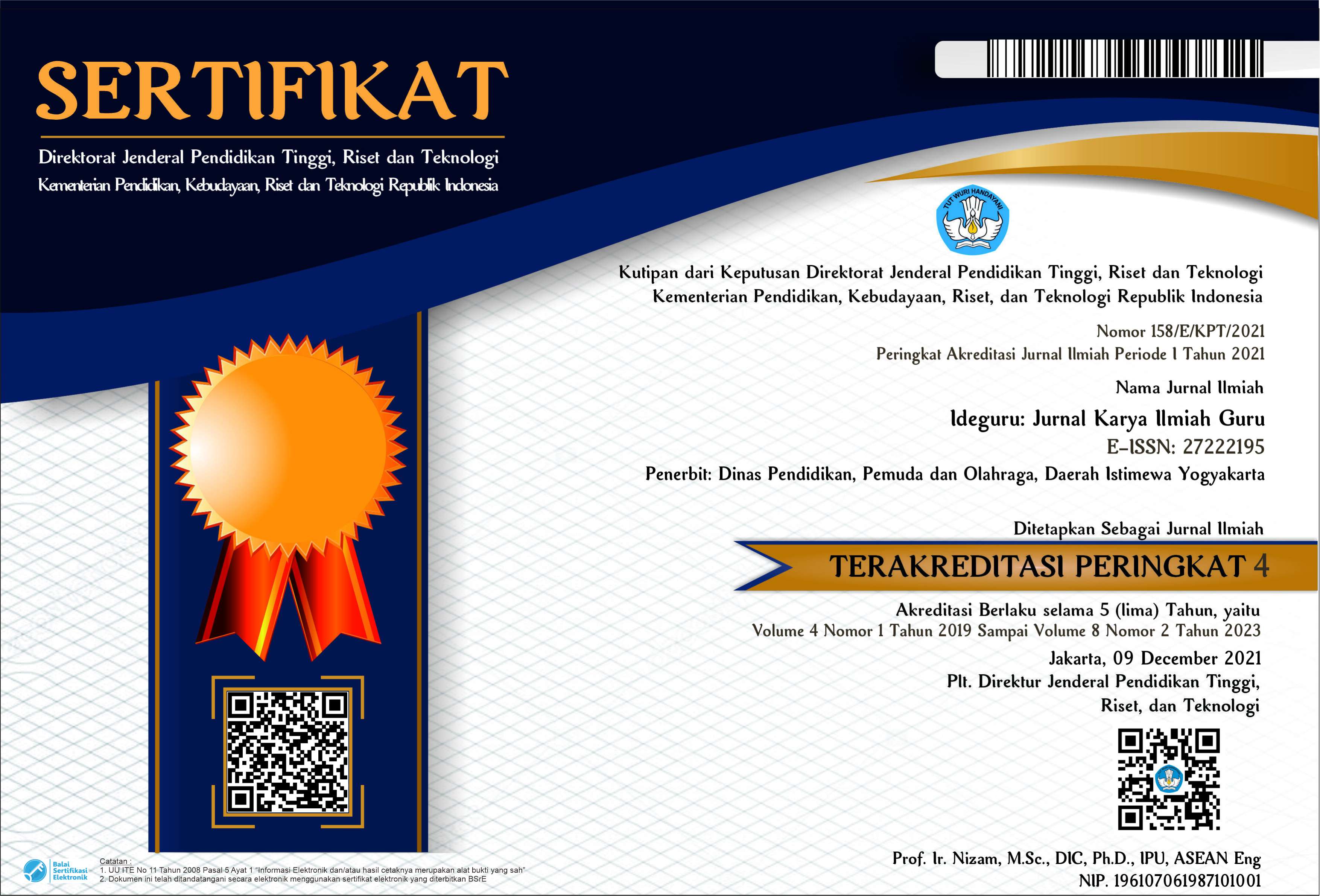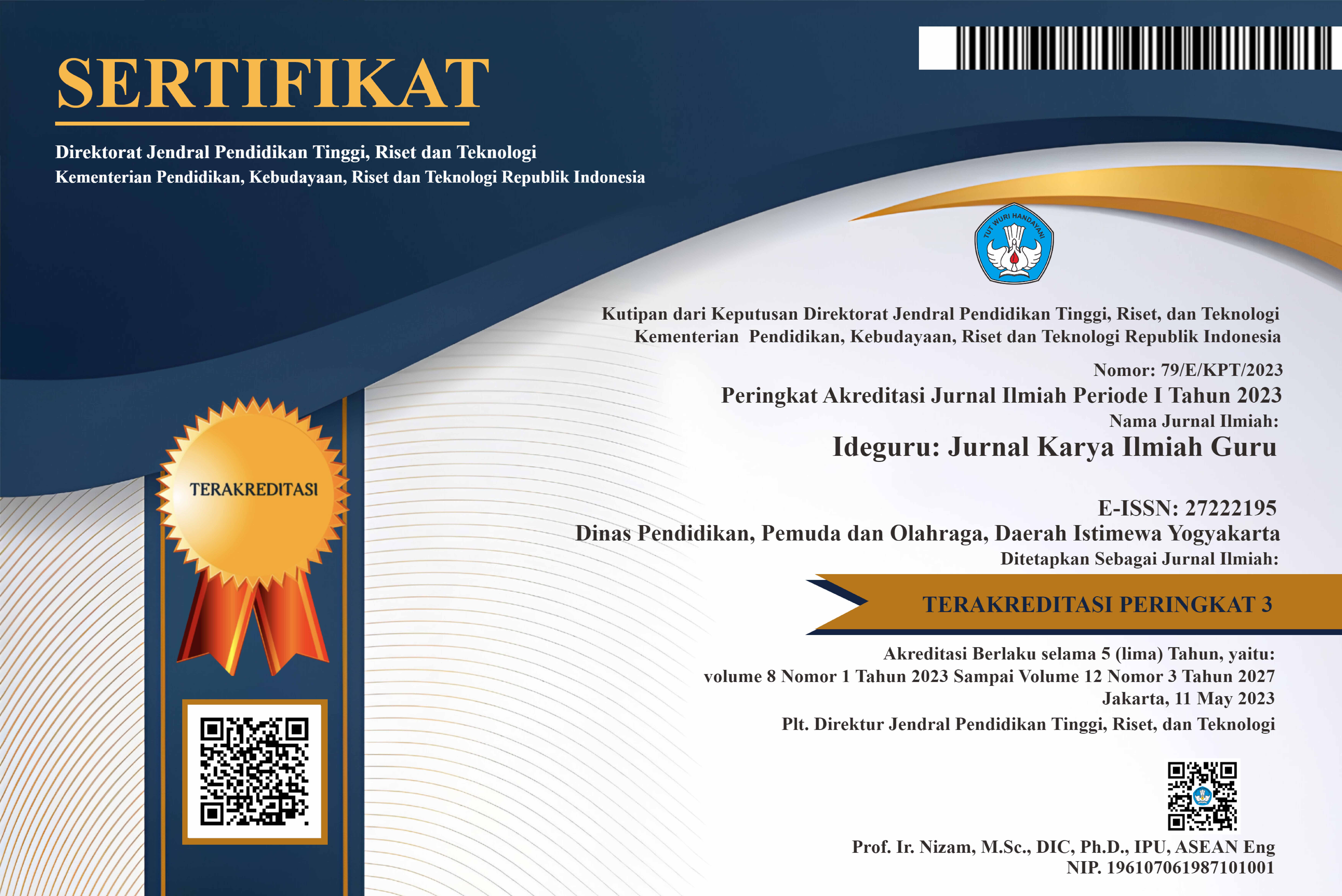Application of Blended Learning to Increase Interest and Learning Achievement in Mathematics Learning
Abstract
This classroom action research aims to improve student’s interest and learning achievement in mathematics learning through the blended learning model. The research conducted in two cycles with each cycle using four components, consist of planning, acting, observing, and reflecting. The subjects in this study were students of class XI IPS 2 SMA Negeri 1 Bambanglipuro in 2020/2021 academic year. Data collection techniques used in this study were teacher observation sheets, student observation sheets, student interest questionnaire instruments, and student achievement test instruments. Data analysis in this study includes presenting data and drawing conclusions. The results showed that; 1) the implementation of the blended learning in cycle II had reached the success indicator with a percentage of 95.24%; 1) the use of the blended learning model is able to increase students' interest, seen from the data in cycle II, it has achieved success indicators of 76.67% of students are in the high category and 33.33% of students are in the very high category in the class, and 2) the use of the blended learning is able to improve student achievement. This can be seen from the data in the second cycle that has achieved a success indicator of 76.67%, that is, 23 students are considered completely out of 30 students in their class. 3) the results of the observations on the implementation of the blended learning in cycle II had reached the success indicator with a percentage of 96.67%. Based on the research results, blended learning can improve improve student’s interest and learning achievement in mathematics learning.
PDF Downloads
Copyright (c) 2022 Anggraeni Ratna Winanti

This work is licensed under a Creative Commons Attribution 4.0 International License.

 DOI:
DOI:














